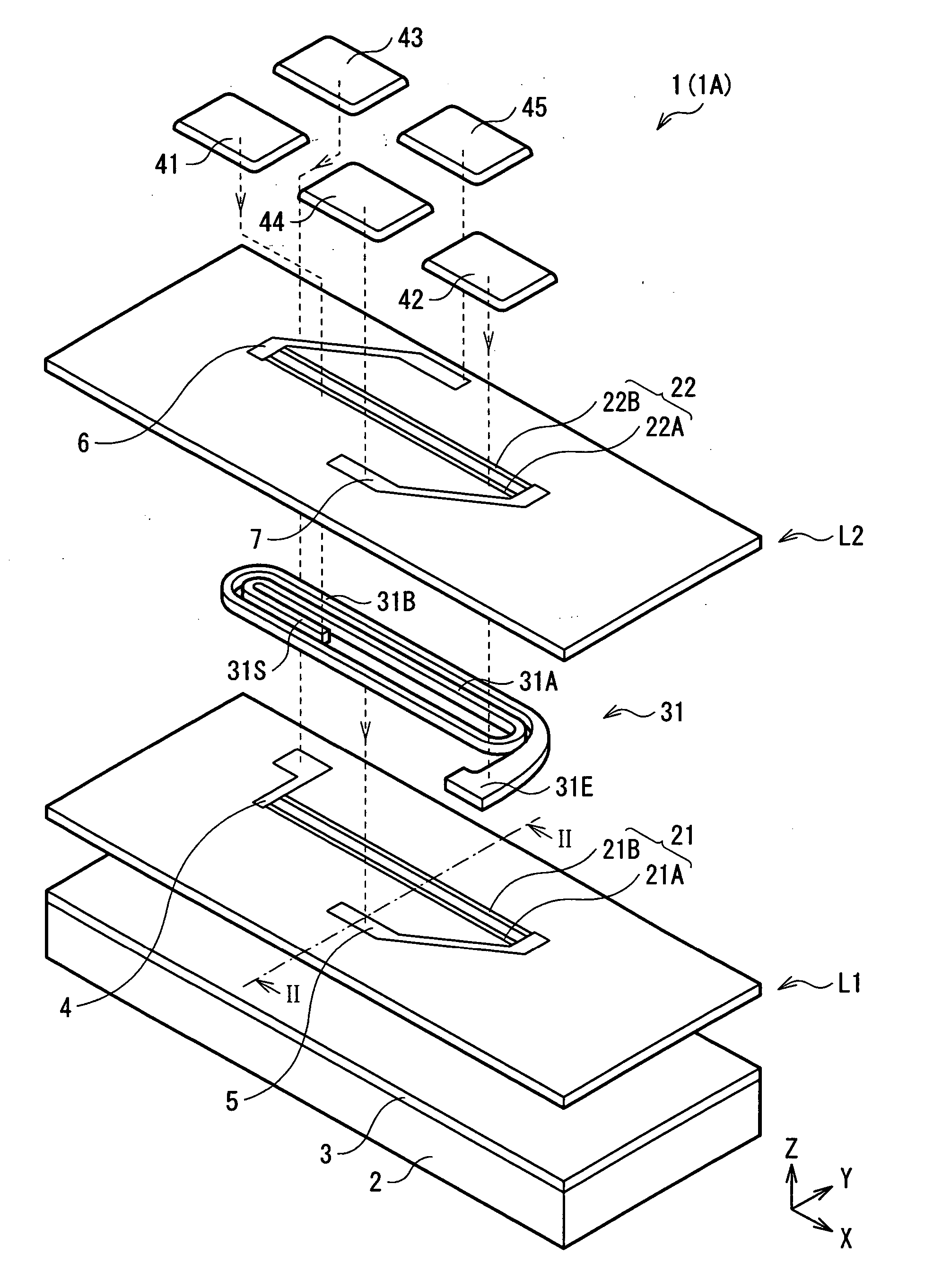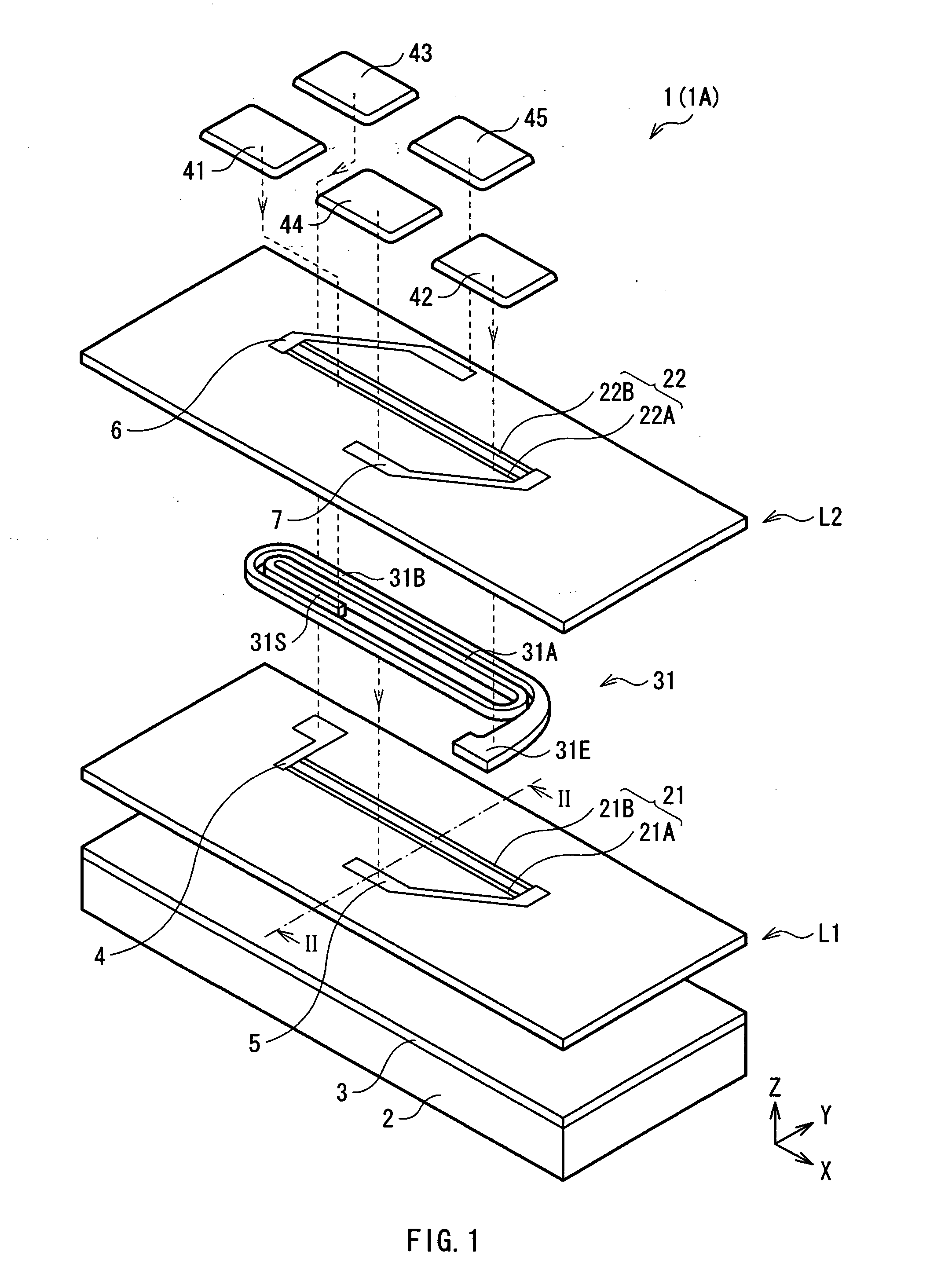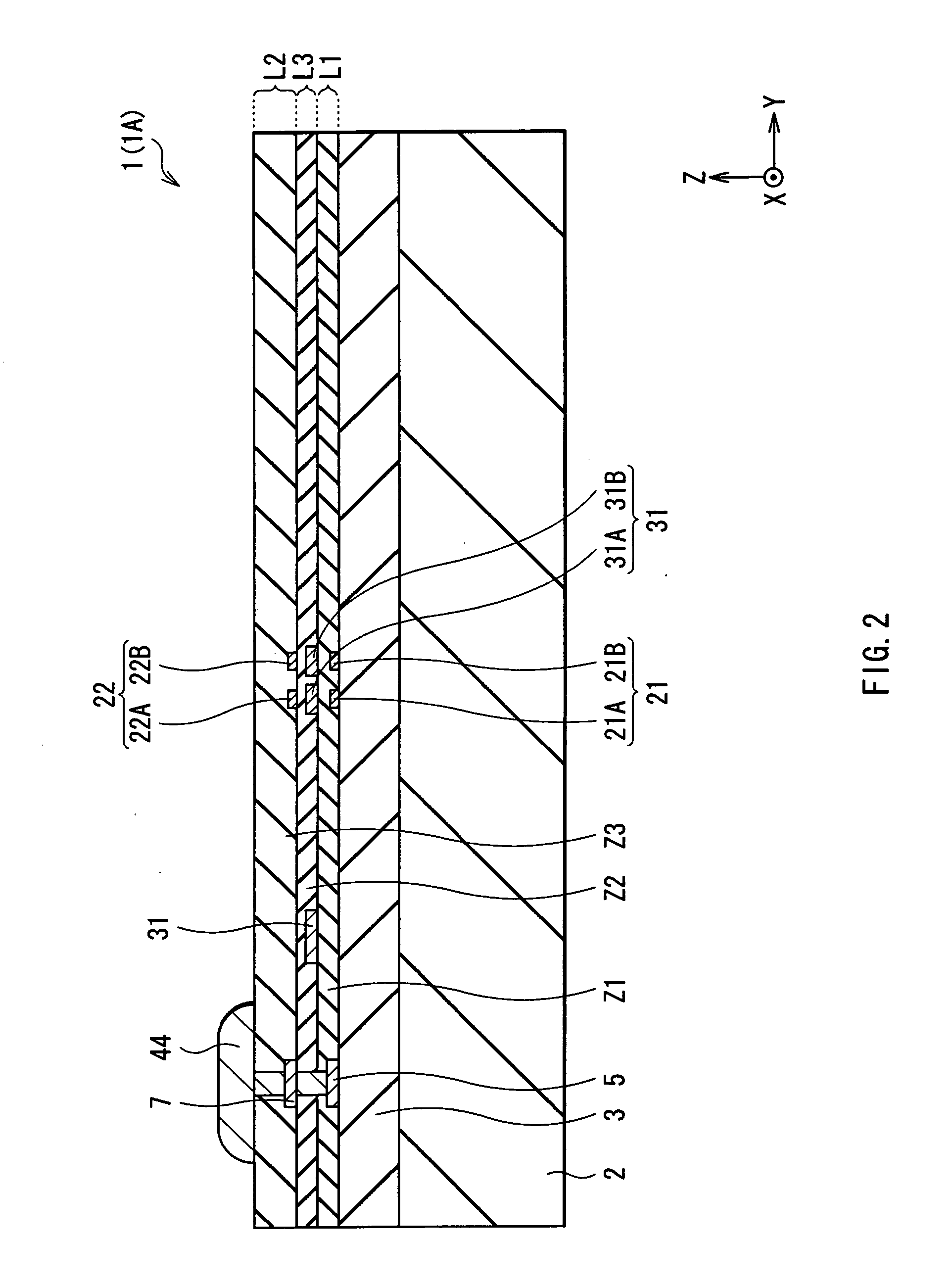Current sensor
a current sensor and small technology, applied in the field of current sensors, can solve the problems of affecting the transmission of signal current as direct current, adverse influence on the communication system, and different load applied to the communication system, and achieve the effect of suppressing the resistance value as a whole, high sensitivity, and high precision
- Summary
- Abstract
- Description
- Claims
- Application Information
AI Technical Summary
Benefits of technology
Problems solved by technology
Method used
Image
Examples
first embodiment
[0038] First, the configuration of a current sensor as a first embodiment of the invention will be described with reference to FIGS. 1 and 2. FIG. 1 is a schematic view illustrating a perspective configuration of a current sensor 1 of the first embodiment. FIG. 2 is a cross section taken along line II-II of the current sensor 1 illustrated in FIG. 1 seen from the direction indicated by the arrows (−X direction). The current sensor 1 is mounted on, for example, a communication device and is used for accurately measuring a current as a control signal. To distinguish the current sensor of the first embodiment from that of a second embodiment to be described later and the like, the current sensor in the first embodiment will be called a current sensor 1A.
[0039] The current sensor 1A has a configuration obtained by sequentially stacking, on a substrate 2 made of silicon (Si) or the like via a base film 3 made of aluminum oxide (Al2O3) or the like, a first-level L1 including a first magn...
second embodiment
[0064] Next, a current sensor 1B as a second embodiment of the invention will be described with reference to FIGS. 10 and 11.
[0065]FIG. 10 is a schematic view illustrating a perspective configuration of the current sensor 1B. FIG. 11 shows a sectional configuration taken along line XI-XI of the current sensor 1B illustrated in FIG. 10 seen from the direction indicated by the arrows (−X direction). The current sensor 1B is constructed by adding a second thin film coil 32 (hereinbelow, simply called the thin film coil 32), a third magnetoresistive element 23 (hereinbelow, simply called the MR element 23), and a fourth magnetoresistive element 24 (hereinbelow, simply called the MR element 24) to the current sensor 1A of the first embodiment.
[0066] The MR element 23 is formed so as to be connected in series to the MR element 21 in a region at the first level L1 other than the region in which the MR element 21 is formed, and includes strip-shaped element patterns 23A and 23B which are ...
PUM
 Login to View More
Login to View More Abstract
Description
Claims
Application Information
 Login to View More
Login to View More - R&D
- Intellectual Property
- Life Sciences
- Materials
- Tech Scout
- Unparalleled Data Quality
- Higher Quality Content
- 60% Fewer Hallucinations
Browse by: Latest US Patents, China's latest patents, Technical Efficacy Thesaurus, Application Domain, Technology Topic, Popular Technical Reports.
© 2025 PatSnap. All rights reserved.Legal|Privacy policy|Modern Slavery Act Transparency Statement|Sitemap|About US| Contact US: help@patsnap.com



